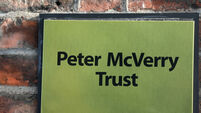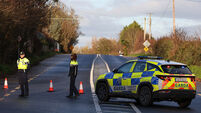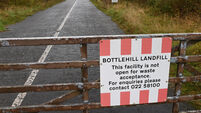What started out as a flight of fancy in a Steven Spielberg sci-fi movie Minority Report, and turned into a hobbyist’s pastime, has evolved within 20 years into a major industry, which poses significant challenges for security and privacy.
The principal use of drones for some years seemed to be to take scenic pictures of areas such as the Wild Atlantic Way or moody studies of Páirc Uí Chaoimh at sunset. Or to map areas deemed ripe for the development of homes and roads and other infrastructure. Or to assist farmers.
Now, in the rest of the world, we have witnessed them evolve into a significant and terrifying weapon of war. And in other instances, they have become a nuisance.
This week’s disruption at Dublin Airport serves as a relatively small example. After a drone was sighted near the airfield in the evening, operations were suspended. Twenty minutes later they resumed. No comment was made on the specifics of the incident for “safety and security reasons”. It is illegal to fly drones within 5km of an airport in the Republic. The mysterious and unsolved three-day incident at London’s Gatwick Airport just before Christmas in 2018, in which 700 flights and over 100,000 passengers were disrupted, remains a miserable benchmark in the minds of many.
The Irish Aviation Authority was one of the first regulators in the world, in 2015, to require mandatory drone registration for all machines above 250gm in weight, or fitted with cameras. Operators are obliged to complete an online training course and to display their ID on their machine.
Drone flying, as it is elsewhere, is increasing in Ireland, and with greater numbers comes the challenge to ensure that legislation, audit, and scrutiny stay ahead of market growth and the technology itself. How many is too many?
In the US, there are an estimated 3.5m such machines. Promises are made about on-board technology which will track speed, height, direction, user’s location, and take-off points, although there are worries about whether the resources exist to monitor all this data. The British are spending over €10m on anti-drone detectors around nuclear plants, transport hubs, and oil rigs. Rules and regs often lag behind the growth of technology.
Ireland needs to future-proof its strategy before a bad experience teaches us a lesson.


CONNECT WITH US TODAY
Be the first to know the latest news and updates













